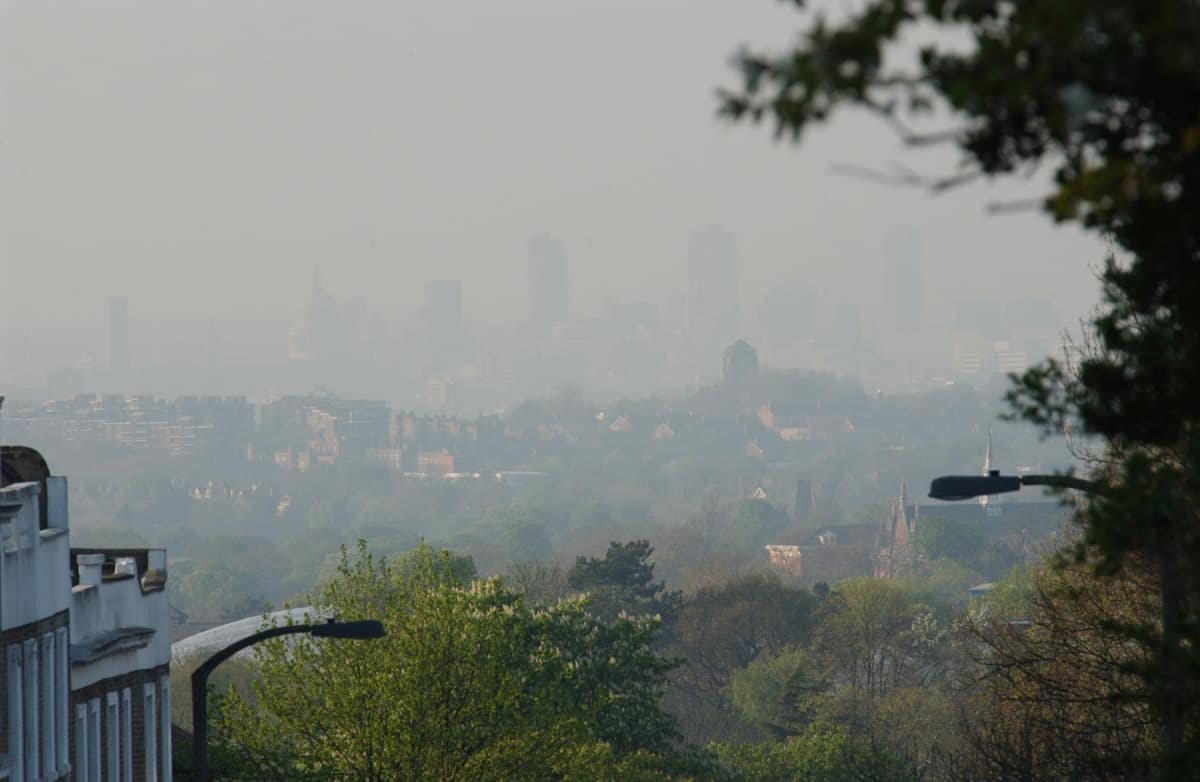
Smog over the London skyline.
Air pollution is an even bigger killer than previously feared, according to new research.
Living in areas with pollution levels below current guidelines raises the risk of heart attacks, strokes and respiratory diseases.
The finding is based on mortality rates in 652 cities across 24 countries and regions – including the UK.
Even exposure to small amounts of PM10s and PM2.5s – emitted by vehicles and factories – were more prone to a premature death.
The 30-year study, published in the New England Journal of Medicine, is the largest to investigate the short-term impacts.
Lead author Dr Haidong Kan, of Fudan University in China, said the findings add to growing evidence current air quality guidelines and standards don’t protect public health.
Inhaling the pollutants regularly was linked to fatal cases of cardiovascular disease, COPD (chronic chronic obstructive pulmonary disease) and other lung conditions.
Co-author Prof Yuming Guo, of Monash University in Australia, said: “There’s no threshold for the association between particulate matter (PM) and mortality.
“Even low levels of air pollution can increase the risk of death.”
Last year a study of 4,000 Brits found regular low exposure caused changes to the heart similar to those in the early stages of heart failure.
That was despite the fact the participants were exposed to levels below the UK guidelines – ranging from eight to 12 micrograms per cubic metre (µg/m3) annually. This was less than the recommended limit of 25 µg/m3 – but close to the World Health Organisation’s 10 µg/m3.
The team at Queen Mary University of London called on the Government to reduce air pollution more quickly.
Prof Guo said the latest results are comparable to previous findings in other multi-city and multi-country studies.
He said: “The adverse health effects of short-term exposure to air pollution have been well documented, and known to raise public health concerns of its toxicity and widespread exposure.
“The smaller the airborne particles, the more easily they can penetrate deep into the lungs and absorb more toxic components causing death.”
Fine particulate matter (PM2.5s) measure less than 2.5 microns and can enter a person’s lungs – and even the bloodstream.
More than eight-in-ten 82 of the EU’s urban population are exposed to these microscopic particles each day.
Air pollution claims more than half a million lives across the UK each year.
Prof Guo said even Australians are vulnerable – despite them facing smaller concentrations than in the UK and other countries.
He said: “The study found Australians are more sensitive to particulate matter air pollution and cannot effectively resist its adverse impacts.
“This may be attributed to Australians’ physiological functions having adapted to living in areas with low levels of particulate matter air pollution.”
The British Heart Foundation has called on public health bodies to do more to improve air quality.
Prof Guo said: “Given the extensive evidence on their health impacts, PM10 and PM2.5 are regulated through the World Health Organisation (WHO) Air Quality Guidelines and standards in major countries.
“However Australians should pay more attention to the sudden increase in air pollution.”